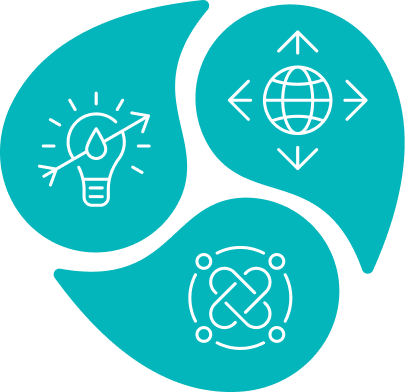The Volta Basin has been identified as a priority action area for the Water, Climate and Development in Africa Program (WACDEP), an initiative of the African Ministers’ Council on Water (AMCOW) developed and implemented by GWP-WA with other partners from 2011 to 2019 and continuing with the WACDEP - Gender Equality.
The GWP-WA is one of the first organizations to have signed, as early as 2010, a memorandum of understanding with the Executive Management of the VBA. The aim was to promote coordination and harmonization of their respective actions, to achieve common goals and to contribute to the implementation of IWRM at the transboundary scale. As a result of this agreement, many initiatives, some of which are described below, have been developed and implemented jointly, contributing to the development of the adaptation and resilience capacities of communities and ecosystems to the impacts of climate change in the basin. In particular, GWP-WA has contributed to the process of elaboration and validation of the Basin Water Charter, at regional and country levels.
Within the framework of the Associated Programme on Flood Management (APFM), the World Meteorological Organization (WMO) and GWP-WA have committed to building the capacity of riparian countries to ensure integrated flood management in the basin. This action has supported the VBA in the development of the project «Integrating Flood and Drought Management and Early Warning for Climate Change Adaptation in the Volta Basin» (VFDM), funded by the Adaptation Fund.
GWP-WA has contributed to the development of the VFDM project and the mobilization of funding for its implementation. It facilitated the preparation and stakeholder consultation and capacity building workshops, including hydrological and meteorological services involved in flood and drought management at regional and country levels. The process was carried out in close collaboration with the VBA and WMO. It includes an analysis of capacity building needs in integrated flood and drought management in the six countries and the basin in 2015 and 2016, a regional training workshop in 2017 on integrated flood and drought management (IFM), the preparation and funding of projects on IFM in the six countries and the basin and finally the preparation and submission of the concept note and the detailed document of the VFDM project for funding to the Adaptation Fund in 2017 and 2018 respectively. Project funding for nearly $8 million was approved in 2018. The project, implemented through 2023 by WMO, is executed by VBA, GWP-WA, and WMO.
Similarly, the support of IUCN, UNEP and GWP-WA, on the basis of the TDA and SAP report, has made it possible to support the efforts of VBA to elaborate and submit for funding to GEF the project Identification Form on «Reversing the Ecosystem and Water Degradation trends in the Volta Basin» (REWarD). The detailed project document was submitted in December 2019 and is, as of June 2021, in the official GEF approval loop.
The development of the REWarD project is led, under the guidance of the VBA, by UNEP and IUCN with the participation of GWP-WA. A regional workshop held in 2016 produced the concept note of a regional program taking into account actions focused on the conservation and restoration of a functional ecosystem of the Volta Basin. This workshop has largely contributed to the development of the Project Identification Form (PIF). As the VBA chose GEF funding from the outset, UNEP and IUCN took the lead as implementing agencies to accompany the development and submission of the PIF and the detailed project document. Bringing its expertise, GWP-WA participated in the development of the technical content of the project based, among others, on the results of the studies previously carried out within the framework of the WACDEP and the Integrated Drought Management Project in West Africa (IDMP-WA) as well as in the mobilization of the basin stakeholders and counterpart funds for the project.

 Case study
Case study